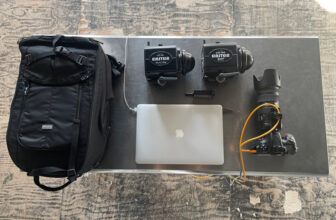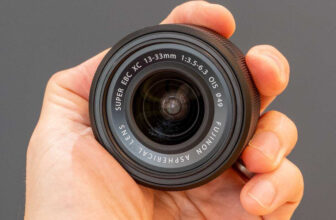
Photoshop and Luminar are two of the biggest names in photo editing.
Photoshop has been the industry standard since its inception, and Luminar pioneered AI-powered tools that made photo editing easier for beginners.
However, as AI technology has evolved and entered every aspect of our lives, the question is: has Photoshop caught up?
The answer is yes, of course it has. Adobe has developed powerful AI models with Firefly and introduced excellent AI tools in Lightroom and Photoshop.
Naturally, Skylum—the makers of Luminar—didn’t just sit back and watch. The company packed even more features into Luminar Neo than its predecessor, Luminar AI, and has continued refining them ever since.
So, how do they compare today? Which is better for AI photo editing: Photoshop or Luminar?
That’s what I set out to discover in this article. I compared each platform’s tools for common editing tasks and challenges, such as sky replacement and portrait enhancement.
If you’re new to photo editing and deciding which software to invest in, already using one and considering a switch, or simply curious about the latest AI updates, this article will guide you through it.
Join me on my quest to discover how AI is continuing to reshape the photo editing process.
AI Enhancement Tools
Auto Enhancement
Neo
Luminar Neo has an Enhance AI tool that can be a handy one-click solution. By simply moving the Accent slider, you can improve the overall look of the image.
However, it also has a Sky Enhancer AI slider, and you can apply both effects selectively using masks. This makes it much more flexible than a simple one-click magic button.
Photoshop
Photoshop doesn’t currently have a single all-in-one “Auto Enhance” tool powered by AI like Luminar’s.
Landscape Enhancement
Neo
Luminar Neo has many AI tools dedicated to landscape photography. All of them are together in a specific panel in the Edit workspace.
Among them, you’ll find a Twilight Enhancer, a Water Enhancer, and the Atmosphere tool that allows you to add fog, mist, and haze.


Some of the AI tools from the Creative panel are also ideal for landscape photos, even if you can use them for any genre—Relight AI comes to mind.
There’s also a Sky Enhancement slider nested inside the Enhance AI tool, and there’s a Sky AI tool used for sky replacement. This last one deserves its own section, so I’ll discuss it later on in the article.
Photoshop
Inside the Neural Filters, you’ll find the Landscape Mixer. This allows you to apply the style of a different image to the one that you’re working on.
You can choose an image from the available presets or upload your own.


You can also use the sliders to change the season or time of day in your photograph.
Of course, all the other creative AI filters can also be used in landscapes, even if they’re not exclusive to them—for example, Style Transfer.
Photoshop also has an AI sky replacement tool, which, as I mentioned above, I’ll compare separately.
Portrait Enhancement
Neo
Just like with its landscape features, Luminar Neo also includes a dedicated panel for portrait enhancement tools — several of which are powered by AI.


The first tool is Portrait Bokeh, which uses AI to calculate depth and blur the background. You can then fine-tune the effect with sliders to mimic the look of different lens bokeh effects.
There are also Face, Skin and Body AI tools. These allow you to remove imperfections and skin shine as well as modify body shape and facial features.
Photoshop
Photoshop’s portrait AI tools are inside the Neural Filters. There’s a skin-smoothing feature that removes imperfections, but it also addresses more complex and creative ones.


The Smart Portrait feature lets you adjust facial expression, position, and lighting, while the Makeup Transfer applies makeup to your model that matches the reference you choose.
Similar to Neo’s Portrait Bokeh, you’ll find the Depth Blur in Photoshop’s Neural Filters. This isn’t under the portrait category because it’s useful for any photograph, but I figured it was a good idea to include it here since it pairs with Neo’s tool.
Modifying a person’s body and facial features is possible using the Liquify filter, which includes face awareness. However, there’s no mention of AI technology behind this feature on the Adobe Help website.
In any case, it’s just as easy and has more flexibility than the AI tools on Neo.
AI-Powered Selection Tools
Neo
Luminar Neo offers AI-powered masking tools in every panel where they’re needed. This means you won’t find the masking tool in the Dodge and Burn panel, but you will find it in the Develop panel.


The Mask AI tool scans your image and, after detecting the different elements, displays them as a list in the panel. Here, you can click each to view the mask overlay and choose which to include in the mask.
The other option is the Object Select AI. In this case, you won’t see anything different after the scan. However, as you hover the cursor over the image, you’ll see overlays on each object you pass. To include them in the mask, simply click on them.
You can further refine any of these masks using non-AI tools such as the brush tool. It’s important to keep in mind that each mask applies only to the editing tools in that panel.
Photoshop
Photoshop has an Object Selection tool powered by Adobe Sensei. It will scan your image and identify different elements, which will light up when you hover over them. To select them, simply click on them.
On the Options bar of this tool, you’ll also have a Select People tool that identifies each person in a group portrait, allowing you to work on each of them individually.
This AI-powered feature can even identify and select specific body parts.


There’s also a Select Subject tool that lets you choose whether to run it locally or in the cloud.
Running it on your device delivers faster results, while the Cloud option sends your image to Adobe’s servers, which use a more powerful algorithm for greater precision. This option works best for complex images with fine details.
Any of these selections can be fine-tuned and modified with other selection tools or inside the Select and Mask workspace.
When using them, you’ll create selections on the current layer. However, using the selection, you can create layer masks or new layers.
AI Sky Replacement
Neo
I believe the Sky Replacement tool has been one of the most popular tools in Luminar software since it was first launched in Luminar 4.
Many years later, with the release of Luminar Neo, Sky AI remains a flagship feature.


You’ll find that Sky AI has its own panel in the Edit workspace. At the top, you’ll see a selection of skies suggested by AI based on what best fits your scene.
You can browse the rest of the gallery or go to the marketplace to buy a new pack.
After choosing the sky you want, there are plenty of sliders to refine the composite if necessary – although it does quite a good job on its own.
You can relight different elements, adjust the reflection, blur the sky, and more. There’s also a masking tool inside the panel if you need it.
Photoshop
The Photoshop Sky Replacement tool is often overlooked because you can do the work manually with layers. However, it’s an excellent AI-powered tool that saves you a great deal of time and effort.
You’ll find this tool in the Edit menu. As soon as you click on it, you’ll see its adjustment panel with a preview of the new sky it selected.
You can browse other skies in the collection, upload yours, or download more free skies from the Adobe website.


The overall lighting of the scene gets automatically adjusted, but you can further retouch everything using sliders until you achieve the most realistic result.
Once you’re happy, you can output the composite in layers, choosing New Layers in the Output menu, or you can output the final result merged on a single layer using the Duplicate Layer option.
Generative AI Tools


AI Image Generation
Neo
Luminar Neo has three generative tools—GenSwap, GenErase, and GenExpand—which you can find in the Catalog section, not in the Edit section.
The GenSwap feature is the one for image generation. It allows you to add new items or change existing ones with a text prompt.
While Neo doesn’t have an AI image generator to generate a whole new image from scratch, there is a workaround. If you go into GenSwap and use the brush to select the entire image, then it will generate a new one that has nothing to do with the original.
If you like the results, you need to save the changes, and this will generate a new image that will be placed in a separate folder. This way, your original remains untouched.
Photoshop
Photoshop’s AI image generator is the Generative Fill tool. Just like GenSwap, you can select part of an image and type whatever you want in that spot.
Alternatively, you can use an empty canvas to generate a new image from scratch. Simply select the Generate Image option from the floating toolbar. At the moment, this feature is only powered by Firefly.
However, we know that in the near future, there will be partner AI models such as Google’s Nano Banana and OpenAI. We know this because it’s already available in Photoshop Beta.
(See more in this post: How to Use Nano Banana in Photoshop.)


Once the Generate Image window opens, you can choose the effects, select a reference image, and even find inspiration for your prompt.
Also, with your Photoshop subscription, you can use the standard features in Adobe Firefly, including a powerful image generator that lets you use text, images, and even 3D shapes as references.
There are also video, vector, and audio generators among other features.
Anything you generate is placed in a new layer, so you can keep working non-destructively.
AI Expand
Neo
GenExpand is another generative feature in Neo’s generative tools panel. This tool lets you generate new content along the edges of the picture to extend the background.
You can leave the prompt space blank, and it will generate whatever it believes is best according to the image. Alternatively, you can type in what new elements should be present in this new section.
If you expand all the edges at once, the results are very inconsistent. If you need to expand your image in all directions, it’s best if you do each side separately.
Also, there’s a limit to how far you can expand the image; you can’t stretch it indefinitely. You’ll get only one variation each time, and if you like it, it will be saved as a different file in another folder.
Photoshop
The Generative Expand tool in Photoshop activates when you’re using the Crop tool. Just like the one in Neo, you can leave the prompt blank or enter whatever you need.
The results are good even if you expand them in all directions. The generated areas are placed as a separate layer, and you’ll receive three variations out of every generation.
The generative expand tool is also available in Adobe Firefly if you want to use partner models. This, however, may require separate generative credits, depending on what type of membership you have.
AI Remove Tools
Neo
The third generative feature in the Catalog workspace is the GenErase tool. This feature is very straightforward: simply use the brush to paint over the element you want to remove—it doesn’t have to be precise.
Then click Erase, and it will generate new pixels to cover the area based on the gathered context—no prompt needed here.
Two other features often go unnoticed because they’re nested in the traditional Erase tool in the Edit workspace. They’re also not marked as AI, but on Luminar’s website, it’s implied that they are, in fact, powered by AI.
I’m talking about the Remove Dust Spots and Remove Powerlines tools. These two features do exactly what their names suggest, and they’re one-click solutions – they don’t have manual controls.
As is often the case with one-click solutions, the results aren’t always perfect. In fact, the Remove Powerlines tool often deletes part of the pylons.
As such, it’s only suitable if you can only see the powerlines as lines in the sky, not for a landscape where you can also see the structure.
Once you’re done, you must save the edited version, which generates a new file – your original remains untouched.
Photoshop
Photoshop’s Remove tool can be powered by AI, but you can also disable it, or, as I do, leave the Auto option selected so that Photoshop chooses the best technology in each case. This is useful because AI requires more power and energy than traditional algorithms.
To use this tool, simply paint over anything you want to remove. You can enable or disable the option to remove items after each stroke.
If you choose the latter, click the check mark icon once you’ve finished selecting all the areas you want, and all the removal happens at once.
Other customizable choices regard the layers. You can choose to work only on one layer or all of them. It’s also possible to create a new layer if you want a non-destructive workflow.
You’ll find a couple of automated features inside the Find distractions tool. Here, there’s a one-click Wires and Cables tool and the editable option of removing people. They both work pretty well.
AI Upscaling
Neo


Luminar Neo features a powerful AI upscaler that lets you enlarge images by 2x, 4x, or 6x. It offers two AI models to do so, and it includes a Face Enhancer feature that you can toggle on and off.
The minimum input size is 257px x 257px, and the maximum input size is 16,000px on the longest side. The maximum output size is 32,000px on the longest side.
Photoshop


Currently, Photoshop only has a Super Zoom tool that upscales images using AI. This tool, located in Neural Filters, is meant to upscale a portion of the photograph.
This is extremely helpful if you didn’t have a focal length long enough to frame the subject you wanted, and you couldn’t get physically closer.
This tool has a maximum of 16x upscaling factor, and multiple features to improve the quality, such as a sharpening slider, a face enhancer tool, and others. You can output the result as a new layer or a new document.
To upscale the entire image, Adobe has developed a Generative Upscaler, which should arrive soon in Photoshop and is already available in Photoshop Beta. It has 2x, 3x, and 4x upscaling options.
If you don’t want to wait, Photoshop Beta is included in the same membership as Photoshop, but you have to download and install it separately.
Photoshop vs Luminar Neo for AI Photo Editing – The Practical Takeaway
When it comes to traditional editing, Photoshop clearly offers more tools than Luminar Neo, but that’s not the case with AI technology. Overall, both programs are packed with AI features that tackle basically the same editing tasks.
Of course, there are a few exceptions, like the photo restoration tool that only Photoshop has or the Relight feature that only Neo has.
However, the main difference doesn’t lie in those unique tools but in how they approach the editing process and who they’re designed for.
Luminar has always aimed to make photo editing accessible to everyone, and that’s why its AI tools are easy to grasp, placed within an intuitive interface, and deliver impressive results with minimal effort.
Photoshop, on the other hand, remains the powerhouse for advanced users. While AI is, of course, simplifying the work, it still offers a level of precision and customization that’s not possible in Neo.
Using AI tools within Photoshop still lets you maintain your workflow in layers, which has always been Photoshop’s most significant advantage.
In my opinion, there isn’t a winner or loser in this battle, nor is there a right or wrong decision when you choose one of these industry-leading software.
What it all comes down to is your editing style, experience level, and workflow needs.
Of course, there are other non-AI factors to consider, such as your budget, whether you want to handle photo management in the same program, and so on.
I hope the above breakdown helped you better understand the features of each application and how their AI tools might fit your workflow.
If you’re looking for a broad perspective that goes beyond AI and considers all aspects of each program, check out this post: Is Luminar Neo Better than Photoshop?
Credit : Source Post






